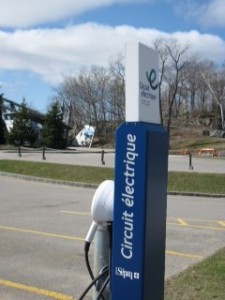In support of offering more renewable energy to Zambians, Alstom is financing an energy kiosk project in Zambia to enable people network access through cheaper renewable electricity. Equipped with solar panels, the kiosk will be capable of autonomously producing its own energy and will enable electricity to be supplied to around 500 people from the North Kariba region.
The funds for the project were made available by the savings from the “We share the power program,” an initiative to reduce electricity consumption around the world. The energy kiosk project is being conducted in partnership with the University of Seattle and the “Kilowatts for Humanity” association.
“Today families are using poor quality, expensive and polluting lighting, and have to travel many miles to recharge their electrical equipment,” explained Antoine Desclos le Peley, the “We share the power” project manager. He notes that because of the energy kiosk, the inhabitants of the North Kariba region will be able to charge a portable battery that will provide them with electricity at home at a lower cost. Work is planned to start in April 2016.
According to Alstom, the provision of sustainable lighting has a positive impact on families’ daily life, by enabling them to continue their activities during the evening, either to work or to study. Managed by an entrepreneur who comes from the region, the energy kiosk is also a profitable activity that contributes to the development of the local economy. In time, this type of installation will be able to supply electricity to schools or hospitals.
“This is a project designed to stand the test of time,” added le Peley. “With ‘We share the power,’ we are demonstrating that Alstom responsibly manufactures sustainable products. Beyond energy consumption management, we are also taking on another challenge, namely to promote access to energy, which is a real lever for development.”










